
1998 WW31, is a non-resonant trans-Neptunian object and binary system from the Kuiper belt located in the outermost region of the Solar System, approximately 148 kilometers (92 miles) in diameter. It was first observed on 18 November 1998, by American astronomer Marc Buie and Robert Millis at the Kitt Peak National Observatory in Arizona, United States. In December 2000, a minor-planet moon, designated S/2000 (1998 WW31) 1 with a diameter of 123 kilometers (76 miles), was discovered in its orbit. After Charon in 1978, it was the first of nearly 100 satellites since discovered in the outer Solar System.
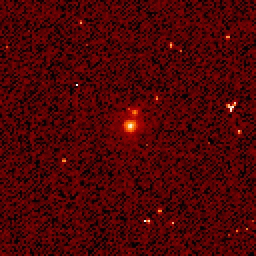
47171 Lempo, or as a binary (47171) Lempo–Hiisi (also known as 1999 TC36), is a trans-Neptunian object and trinary system from the Kuiper belt, located in the outermost regions of the Solar System. It was discovered on 1 October 1999, by American astronomers Eric Rubenstein and Louis-Gregory Strolger during an observing run at Kitt Peak National Observatory in Arizona, United States. Rubenstein was searching images taken by Strolger as part of their Nearby Galaxies Supernova Search project. It is classified as a plutino with a 2:3 mean-motion resonance with Neptune and is among the brighter TNOs. It reached perihelion in July 2015. This minor planet was named after Lempo from Finnish mythology.
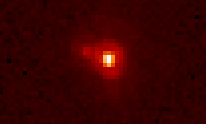
(55637) 2002 UX25 (provisional designation 2002 UX25) is a trans-Neptunian object that orbits the Sun in the Kuiper belt beyond Neptune. It briefly garnered scientific attention when it was found to have an unexpectedly low density of about 0.82 g/cm3.

58534 Logos, or as a binary system (58534) Logos-Zoe, is a trans-Neptunian object and binary system from the classical Kuiper belt, approximately 77 kilometers (48 miles) in diameter. The bright cubewano belongs to the cold population and has a 66-kilometer sized companion named Zoe. The system mass is (4.58±0.07)×1017 kg.

79360 Sila–Nunam (provisional designation 1997 CS29) is a cold classical Kuiper belt object (cubewano) and binary system made up of components of almost equal size, called Sila and Nunam, orbiting beyond Neptune in the Solar System. The name of the system is the combined names of the two bodies, Sila and Nunam.
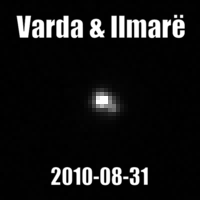
174567 Varda (provisional designation 2003 MW12) is a binary trans-Neptunian planetoid of the resonant hot classical population of the Kuiper belt, located in the outermost region of the Solar System. Its moon, Ilmarë, was discovered in 2009.

(15875) 1996 TP66 (provisional designation 1996 TP66) is a resonant trans-Neptunian object of the plutino population, located in the outermost region of the Solar System, approximately 154 kilometers (96 miles) in diameter. It was discovered on 11 October 1996, by astronomers Jane Luu, David C. Jewitt and Chad Trujillo at the Mauna Kea Observatories, Hawaii, in the United States. The very reddish RR-type with a highly eccentric orbit has been near its perihelion around the time of its discovery. This minor planet was numbered in 2000 and has since not been named. It is probably not a dwarf planet candidate.
(24835) 1995 SM55 (provisional designation 1995 SM55) is a trans-Neptunian object and member of the Haumea family that resides in the Kuiper belt, located in the outermost region of the Solar System. It was discovered on 19 September 1995, by American astronomer Nichole Danzl of the Spacewatch program at Kitt Peak National Observatory near Tucson, Arizona, in the United States. It measures approximately 200 kilometers in diameter and was the second-brightest known object in the Kuiper belt, after Pluto, until 1996 TO66 was discovered.
(35671) 1998 SN165 (provisional designation 1998 SN165) is a trans-Neptunian object from the Kuiper belt located in the outermost region of the Solar System. It was discovered on 23 September 1998, by American astronomer Arianna Gleason at the Kitt Peak National Observatory near Tucson, Arizona. The cold classical Kuiper belt object is a dwarf planet candidate, as it measures approximately 400 kilometers (250 miles) in diameter. It has a grey-blue color (BB) and a rotation period of 8.8 hours. As of 2021, it has not been named.
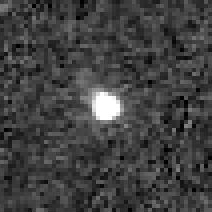
(40314) 1999 KR16 is a trans-Neptunian object on an eccentric orbit in the outermost region of the Solar System, approximately 254 kilometers (158 miles) in diameter. It was discovered on 16 May 1999, by French astronomer Audrey Delsanti and Oliver Hainaut at ESO's La Silla Observatory in northern Chile. The very reddish object is a dwarf planet candidate and has a rotation period of 11.7 hours.
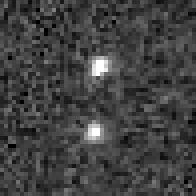
88611 Teharonhiawako (provisional designation 2001 QT197) is a trans-Neptunian object and a member of the cold classical Kuiper belt, measuring about 220 km in diameter. It is a binary object, with a large companion named Sawiskera (formally designated (88611) Teharonhiawako I Sawiskera), which at 126 km in diameter is about two-thirds the size of its primary. The two components together are known as the Teharonhiawako–Sawiskera binary system.
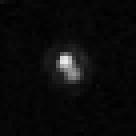
65489 Ceto, as a binary also (65489) Ceto/Phorcys, is a binary trans-Neptunian object (TNO) discovered on March 22, 2003, by Chad A. Trujillo and Michael Brown at Palomar. It is named after the sea goddess Ceto from Greek mythology. It came to perihelion in 1989.

229762 Gǃkúnǁʼhòmdímà (provisional designation 2007 UK126) is a trans-Neptunian object and binary system from the extended scattered disc, located in the outermost region of the Solar System. It was discovered on 19 October 2007 by American astronomers Megan Schwamb, Michael Brown, and David Rabinowitz at the Palomar Observatory in California and measures approximately 600 kilometers (400 miles) in diameter. This medium-sized TNO appears to be representative of a class of mid-sized objects under approximately 1000 km that have not collapsed into fully solid bodies. Its 100-kilometer moon was discovered by Keith Noll, Will Grundy, and colleagues with the Hubble Space Telescope in 2008, and named Gǃòʼé ǃHú.

66652 Borasisi, or as a binary (66652) Borasisi-Pabu, is a binary classical Kuiper belt object. It was discovered in September 1999 by Chad Trujillo, Jane X. Luu and David C. Jewitt and identified as a binary in 2003 by K. Noll and colleagues using the Hubble Space Telescope.
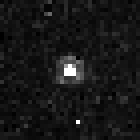
(82075) 2000 YW134 (provisional designation 2000 YW134) is a resonant trans-Neptunian object and binary system, located in the outermost region of the Solar System. It was discovered on 26 December 2000, by astronomers with the Spacewatch survey at Kitt Peak Observatory near Tucson, Arizona. The reddish object stays in a rare 3:8 resonance with Neptune. A smaller companion was discovered by the Hubble Space Telescope in October 2002. As of 2021, neither the primary body nor its satellite have been named.

(612095) 1999 OJ4 (provisional designation 1999 OJ4) is a trans-Neptunian object and binary system from the classical Kuiper belt, located in the outermost region of the Solar System. The bright cubewano belongs to the cold population and measures approximately 75 kilometers (47 miles) in diameter. It was first observed at Mauna Kea Observatory on 18 July 1999. Discovered in 2005, its minor-planet moon is just 3 kilometers smaller than its primary and has an orbital period of 84 days.
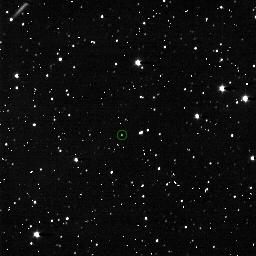
2014 OS393, unofficially designated e31007AI, e3 and PT2, is a binary trans-Neptunian object in the classical Kuiper belt, the outermost region of the Solar System. It was first observed by the New Horizons KBO Search using the Hubble Space Telescope on 30 July 2014. Until 2015, when the object 486958 Arrokoth was selected, it was a potential flyby target for the New Horizons probe. Estimated to be approximately 42 kilometres (26 mi) in diameter, the object has a poorly determined orbit as it had been observed for only a few months.
(508869) 2002 VT130, provisional designation 2002 VT130, is a trans-Neptunian object and binary system from the classical Kuiper belt, located in the outermost region of the Solar System. It was discovered by American astronomer Marc Buie at Kitt Peak Observatory on 7 November 2002. The primary measures approximately 324 kilometers (201 miles) in diameter.

(275809) 2001 QY297 is a trans-Neptunian object from the classical Kuiper belt, located in the outermost region of the Solar System. The binary classical Kuiper belt object belongs to the cold population.
2011 JY31 is a binary trans-Neptunian object from the Kuiper belt, located in the outermost region of the Solar System. It is a cold classical Kuiper belt object. 2011 JY31 was discovered on 4 May 2011, by a team of astronomers using one of the Magellan Telescopes in Chile during the New Horizons KBO Search for a potential flyby target for the New Horizons spacecraft. Distant observations by New Horizons from September 2018 revealed its binary nature, showing two 68 km (42 mi)-wide components in a tight, mutual orbit 200 km (120 mi) apart.
















